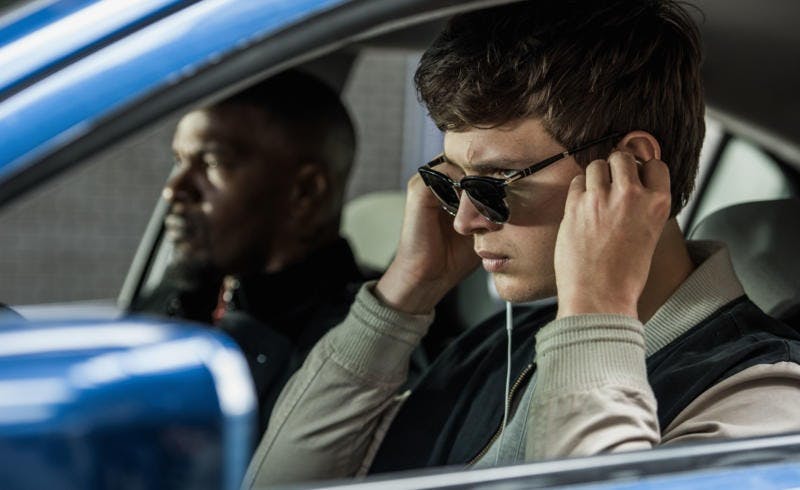By Simon Tessmer
Editor's Note: There Will Be Criticism is a weekly column by Simon Tessmer, a film student at MSU. Tessmer's other reviews can be read on his blog.

IMDB | Photo by Wilson Webb - © 2016 - TriStar Pictures
By Simon Tessmer
Editor's Note: There Will Be Criticism is a weekly column by Simon Tessmer, a film student at MSU. Tessmer's other reviews can be read on his blog.
I wept when I saw "Baby Driver."
Walking out of the theatre shaking and dumbstruck, I was approached by a stranger from the same screening who needed confirmation that she wasn’t alone in feeling blindsided. I was emotionally depleted not wholly by Driver’s story, a familiar narrative about a getaway driver with a troubled past who falls in love and tries to escape his life of crime. I received a bliss injection from its style, its glorious ambition to precisely synchronize the action sequences to an immaculately composed musical playlist, an on-its-surface simple idea executed with such excellence that the resulting work activated something basic in my brain and flooded me with fervent joy. In combination with flawless performances and a brilliant screenplay, the totality of "Baby Driver" demonstrates the power of perfect filmmaking.
The film is unmistakably authored by Edgar Wright, Driver’s writer/director, a favorite of mine whose previous works have left an indelible mark on contemporary film culture. Wright’s latest piece, which stars Ansel Elgort as the eponymous driver, Lily James as his love interest and a criminal gang composed of Kevin Spacey, Jon Hamm, Jamie Foxx and Eiza González, shows a loving refinement of his unique directorial style, famous for its precise and methodical milking of sound and image for maximum expression and humor.
In Driver’s case, this means the development of action sequences that unfold with close precision to the songs Baby (Elgort) curates for the occasion. He perpetually sports earbuds and in some magical sense lives his life to the rhythm of his personal soundtrack, a joyful perspective into which Driver’s audience gains access, as tires squeal, guns fire, and bodies move with cascading choreography akin to musical classics such as "Singin’ in the Rain (1952)." The film’s unusual combination of taut action and song-synchronization is pulled off with such rigorous perfection that I found myself buzzing from a spewing neural firehose of endorphins.
Hamm unexpectedly delivers a career-best performance as Buddy, a seasoned criminal with greasy hair, killer scruff and an angular face bent on dispensing white-hot rage. Foxx delivers a similarly simmering performance, and Spacey rattles off lyric monologues like the "Glengarry Glen Ross (1992)" pro he is. Elgort tops the pyramid with a cool performance both flamboyant and stoic, and James makes a compelling argument for love at first sight.
Wright dispenses not totally with his comedic stylings, as Driver features a wide roster of quick dialogue jokes and visual gags that reward the attentive viewer. Wright-heads will recognize his signature editing flairs and comedic rhythm, and I recommend multiple viewings to spot the film’s litany of Coen-esque details that prove Wright’s literary skill in refining an airtight screenplay.
"Baby Driver" is an ecstatic experience, a vehicle for pure joy and awe that illuminates the immense emotive power of well-crafted film form. Wright’s impossible improvement on what was from its beginning an ingeniously effective style bodes shockingly well for the future of his directorial career, and I’d be personally appreciative if you used your money to ensure its continuity.
Rating: 5/5
Support student media! Please consider donating to The State News and help fund the future of journalism.